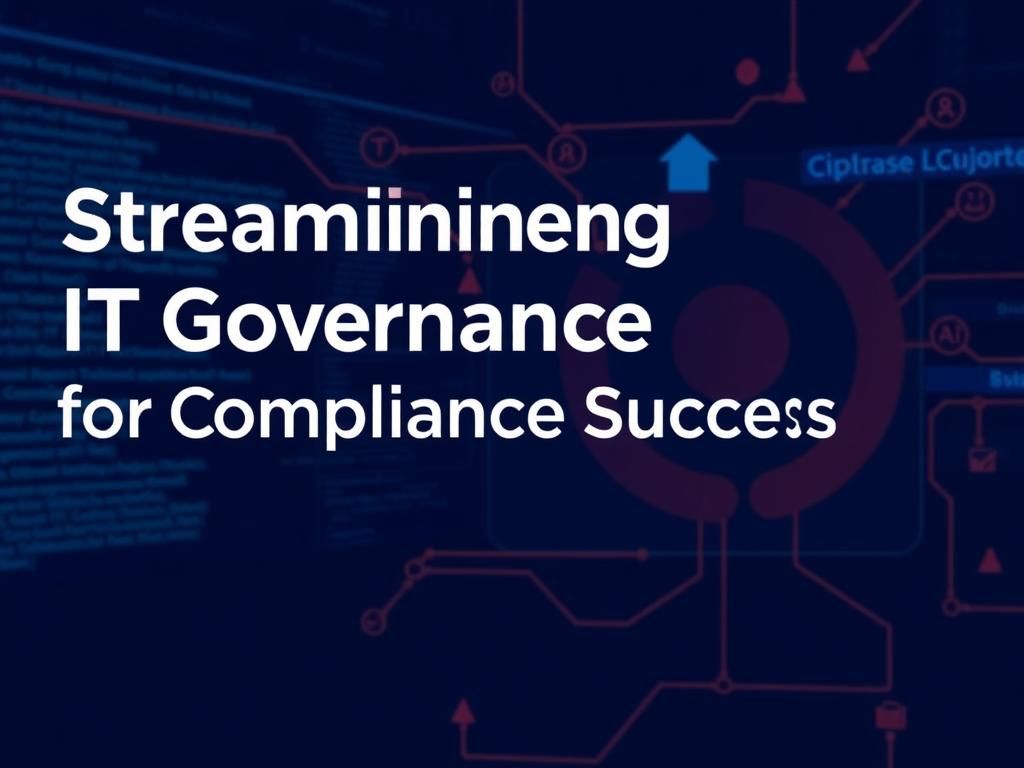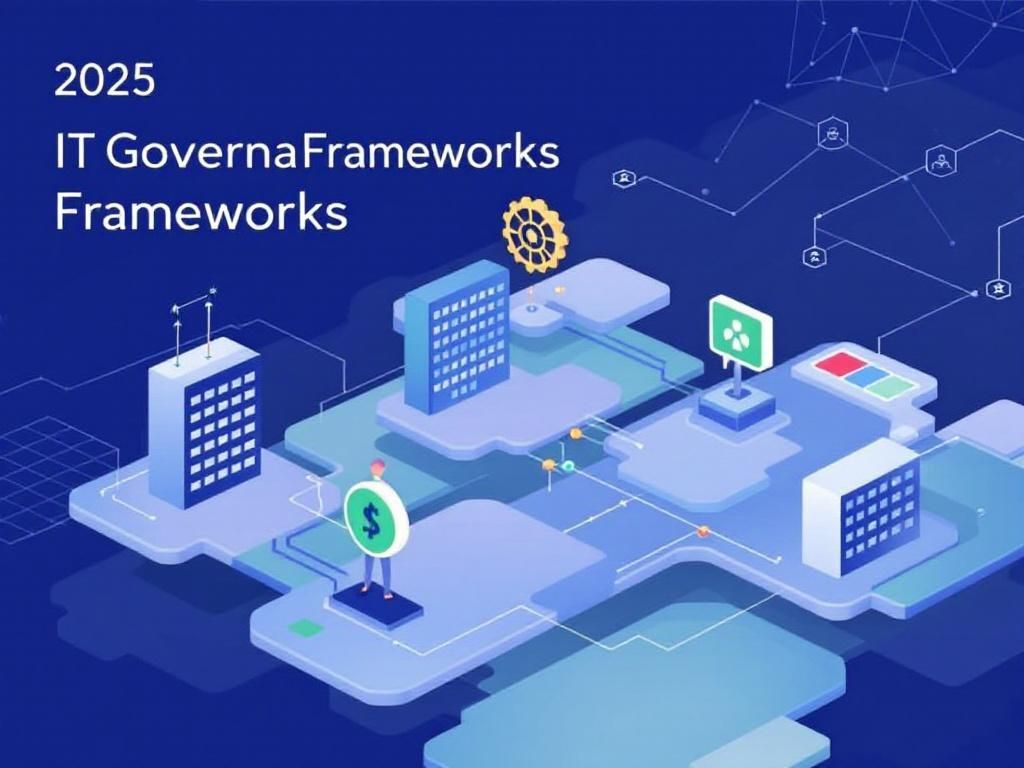Mastering IT Governance in Regulated Industries
Explore the importance of IT governance in regulated industries, ensuring compliance, efficiency, and risk management for sustainable growth.

In the realm of regulated industries, the interaction between technology and governance plays a pivotal role in ensuring compliance, security, and efficiency. As businesses navigate through complex regulatory landscapes, the integration of IT governance becomes not just beneficial, but essential. The core purpose of IT governance in these sectors is to align IT strategy with business goals while managing risks and ensuring compliance with various regulations. This article delves into the critical components, challenges, and best practices of IT governance in regulated industries such as finance, healthcare, and pharmaceuticals.
Table of Contents
Understanding IT Governance
IT governance refers to the framework that ensures that IT investments support business objectives while mitigating risks and meeting regulatory requirements. It encompasses the structures, processes, and relational mechanisms that facilitate decision-making regarding IT resources.
Key Components of IT Governance
- Alignment with Business Goals: Ensuring that IT initiatives directly support and drive business objectives.
- Risk Management: Identifying, assessing, and mitigating risks associated with IT operations.
- Compliance: Adhering to laws, regulations, and standards pertinent to the industry.
- Resource Management: Optimizing the use of IT resources to maximize value and efficiency.
- Performance Measurement: Setting metrics and KPIs to evaluate the effectiveness of IT governance.
The Importance of IT Governance in Regulated Industries
Regulated industries face stringent requirements that mandate the implementation of rigorous IT governance frameworks. Here are some reasons why effective IT governance is crucial:
1. Compliance with Regulations
Entities in regulated industries must comply with various laws and standards, such as:
| Industry | Regulations |
|---|---|
| Healthcare | HIPAA, HITECH |
| Finance | SOX, GDPR, PCI-DSS |
| Pharmaceutical | FDA regulations, GxP |
Non-compliance can lead to significant penalties, including fines and reputational damage. IT governance ensures that organizations are prepared to meet these requirements through proper controls and documentation.
2. Risk Mitigation
Effective IT governance frameworks help organizations identify and manage technology-related risks:
- Data breaches and security threats
- Operational disruptions
- Compliance-related risks
By establishing a robust risk management process, companies can minimize their exposure and enhance their resilience against unforeseen events.
3. Increasing Operational Efficiency
Implementing strong IT governance can lead to improved operational efficiencies:
- Streamlined processes and reduced redundancies
- Better resource allocation and utilization
- Enhanced decision-making capabilities
Challenges in Implementing IT Governance
While the benefits of IT governance are evident, organizations in regulated industries often face challenges:
1. Complexity of Regulations
The constantly evolving landscape of regulations can be overwhelming. Organizations must stay updated and adapt their governance frameworks accordingly.
2. Resistance to Change
Employees may resist new governance initiatives due to fear of increased scrutiny or altered workflows. Effective change management strategies are essential to mitigate this resistance.
3. Resource Constraints
Implementing effective IT governance requires financial and human resources, which can be a challenge for smaller organizations.
Best Practices for IT Governance
Organizations can enhance their IT governance practices by adopting the following strategies:
1. Establish Clear Roles and Responsibilities
Defining roles within the governance framework ensures accountability and clarity. Key stakeholders should include:
- IT leadership
- Compliance officers
- Executive management
2. Develop a Comprehensive Governance Framework
Utilize established frameworks such as COBIT, ITIL, or ISO/IEC standards as a basis for developing a customized governance approach.
3. Conduct Regular Training and Awareness Programs
Invest in training sessions to educate employees about compliance requirements and the importance of IT governance. This will foster a culture of compliance and accountability.
4. Leverage Technology Solutions
Utilize tools and software designed to assist with compliance tracking, risk assessments, and performance measurement. This can lead to more efficient governance processes.
Real-World Examples of IT Governance in Action
To put the principles of IT governance into context, let’s examine some real-world applications in regulated industries:
Case Study 1: Healthcare
A major healthcare provider faced challenges related to data security and HIPAA compliance. By implementing a comprehensive IT governance framework, they integrated regular risk assessments and employee training programs, significantly reducing the incidence of data breaches.
Case Study 2: Finance
A financial institution struggled with compliance related to SOX and GDPR. Through the development of a robust governance structure that included automated compliance monitoring tools, they improved audit readiness and reduced compliance costs.
Conclusion
In summary, IT governance is a critical component of operational success in regulated industries. By aligning IT strategies with business goals, managing risks effectively, and ensuring compliance with a myriad of regulations, organizations can navigate the complex landscape of compliance and security challenges. As technology continues to evolve, the importance of robust IT governance frameworks will only increase, making it imperative for organizations to prioritize these practices.
FAQ
What is IT Governance in regulated industries?
IT Governance in regulated industries refers to the framework and practices that ensure IT systems and processes comply with legal and regulatory requirements while aligning with the organization’s goals.
Why is IT Governance important in regulated industries?
IT Governance is crucial in regulated industries to mitigate risks, ensure compliance with regulations, and enhance operational efficiency, ultimately protecting the organization from legal penalties and reputational damage.
What are the key components of IT Governance?
Key components of IT Governance include risk management, compliance management, resource management, performance measurement, and strategic alignment with business objectives.
How does IT Governance differ from IT Management?
IT Governance focuses on the framework and policies that guide IT decisions and align IT with business goals, while IT Management involves the day-to-day operations and administration of IT resources.
What are the common frameworks used for IT Governance?
Common frameworks for IT Governance include COBIT, ITIL, ISO/IEC 38500, and NIST Cybersecurity Framework, each providing guidelines and best practices for effective governance.
How can organizations ensure effective IT Governance?
Organizations can ensure effective IT Governance by establishing clear policies, conducting regular audits, engaging stakeholders, and continuously monitoring compliance with regulatory requirements.








